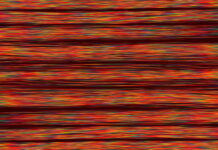Ultrawide displays have revolutionized the world of computing and entertainment, offering users a wider field of view and enhanced immersion. With their expansive aspect ratios and panoramic visuals, these monitors have become increasingly popular in recent years, catering to a variety of applications ranging from gaming and content creation to professional workstations and multitasking environments. In this comprehensive exploration, we will delve into the intricacies of ultrawide displays, discussing their features, benefits, applications, and technological advancements that have contributed to their rise in prominence.
Ultrawide monitors, as the name suggests, possess a significantly wider screen aspect ratio compared to traditional displays. While standard monitors typically adhere to a 16:9 aspect ratio, ultrawide monitors typically range from 21:9 to 32:9, offering users an expansive horizontal space that is particularly suited for multitasking, immersive gaming experiences, and cinematic viewing. The ultrawide aspect ratio provides a wider field of view, enabling users to see more content horizontally without the need for scrolling or zooming.
One of the primary advantages of ultrawide displays is their ability to enhance productivity and multitasking capabilities. With the additional screen real estate, users can comfortably work with multiple windows and applications side by side, eliminating the need to constantly switch between tabs or windows. This can be particularly advantageous for professionals who rely on software suites that require simultaneous access to multiple tools, such as video editors, graphic designers, and financial analysts. The extended horizontal space allows for a more streamlined workflow and increased efficiency.
In the realm of gaming, ultrawide monitors offer a truly immersive experience that can transport players into the heart of their virtual worlds. The wider aspect ratio provides a broader field of view, allowing gamers to see more of the in-game environment and gain a competitive edge by spotting enemies or objects that might have otherwise been outside their peripheral vision. Moreover, many game developers now optimize their titles to support ultrawide resolutions, ensuring that gamers can fully enjoy the intended visual experience. The cinematic aspect ratio also adds an extra layer of immersion, emulating the wide-screen format seen in movie theaters.
To achieve the captivating visual experience offered by ultrawide monitors, manufacturers employ various technologies and features. One such feature is curved displays. Curvature adds a sense of depth and engagement, enveloping the viewer in the visuals and providing a more natural viewing experience. The curve of the display matches the natural curvature of the human eye, reducing eye strain and creating a more comfortable viewing angle. It also enhances the perception of depth, making the content on the screen feel more lifelike and immersive.
Another crucial aspect of ultrawide monitors is their resolution. These displays often feature high resolutions, such as Quad HD (2560 x 1440) or Ultra HD (3840 x 2160), resulting in sharp and detailed visuals. The combination of the ultrawide aspect ratio and high resolution ensures that users can fully appreciate the vast amount of screen real estate, enjoying crystal-clear images and text. Additionally, advancements in panel technologies, such as IPS (In-Plane Switching) and VA (Vertical Alignment), contribute to improved color accuracy, wider viewing angles, and better contrast ratios, enhancing the overall visual quality.
Connectivity options are also critical for ultrawide monitors, as they determine the range of devices that can be connected and the versatility of their usage. Most ultrawide displays come equipped with multiple input ports, including HDMI, DisplayPort, and USB-C. These interfaces allow users to connect a wide range of devices, such as computers, laptops, gaming consoles, and media players. The inclusion of USB-C ports further enables the transmission of audio, video, and power over a single cable, simplifying the setup process and reducing cable clutter.
As technology advances, ultrawide displays continue to evolve, incorporating innovative features to further enhance the user experience. One notable advancement is the introduction of high refresh rates. Traditionally, monitors operated at 60Hz, meaning they refreshed the screen 60 times per second. However, many ultrawide displays now offer refresh rates of 144Hz or even higher. This higher refresh rate results in smoother motion and reduced motion blur, particularly beneficial for fast-paced gaming and action-packed scenes. The combination of a wider field of view and a high refresh rate delivers a truly immersive gaming experience that draws players into the virtual worlds with astonishing realism.
Another noteworthy development in the realm of ultrawide displays is the integration of adaptive sync technologies. Adaptive sync, including AMD FreeSync and NVIDIA G-SYNC, synchronizes the refresh rate of the monitor with the graphics card’s output, eliminating screen tearing and stuttering. This synchronization ensures that each frame is displayed at the right moment, resulting in buttery-smooth gameplay and a more enjoyable visual experience. Adaptive sync technologies are particularly valuable in ultrawide monitors due to the increased pixel count and wider aspect ratio, which can put additional strain on the graphics card.
HDR (High Dynamic Range) is yet another significant feature that has found its way into many ultrawide displays. HDR enhances the contrast and color accuracy of the monitor, allowing for a wider range of luminosity and a more vibrant color palette. This technology brings content to life, with deeper blacks, brighter whites, and more nuanced shades in between. HDR support is especially valuable for multimedia consumption, including watching movies and enjoying visually stunning games. It adds depth and realism to the visuals, creating a more immersive and captivating viewing experience.
It is worth mentioning that while ultrawide displays offer numerous advantages, they may not be suitable for every use case. Some software applications and websites are not optimized for wider aspect ratios, resulting in either black bars on the sides or stretched content. However, many modern operating systems and software have made strides in accommodating ultrawide displays, allowing for better utilization of the additional screen space.
Ultrawide displays have revolutionized the way we interact with computers, offering a wider field of view, increased productivity, and immersive entertainment experiences. With their expansive aspect ratios, high resolutions, curved designs, and advanced technologies like high refresh rates and adaptive sync, ultrawide monitors have become highly sought after for gaming, content creation, multitasking, and media consumption. As technology continues to advance, we can expect further refinements and innovations in ultrawide displays, bringing even more immersive and captivating visual experiences to users worldwide.
Moreover, the adoption of ultrawide displays is not limited to the realm of personal computing and entertainment. Many industries and professions have embraced these monitors for their specific needs. In the realm of graphic design and video editing, ultrawide displays provide ample space for working with complex timelines, editing panels, and visualizing projects in great detail. The wider canvas allows artists and editors to have a comprehensive view of their work, enabling precise adjustments and facilitating efficient workflows. Architects and engineers also benefit from the extended horizontal real estate, as it allows for the simultaneous display of blueprints, design software, and reference materials, enhancing their productivity and accuracy.
Ultrawide displays have found their way into collaborative workspaces and professional environments as well. In collaborative settings, such as conference rooms or team meetings, an ultrawide monitor can serve as a central display for presentations, data sharing, and collaborative brainstorming. The expansive screen real estate ensures that all participants can comfortably view the content without straining their eyes or crowding around a smaller display.
In the realm of financial trading and stock market analysis, ultrawide displays have become a staple for traders and analysts who rely on monitoring multiple charts, news feeds, and financial indicators simultaneously. The wide aspect ratio allows for a comprehensive overview of market trends, enabling swift decision-making and efficient trade execution.
While gaming, productivity, and professional applications dominate the usage of ultrawide displays, their benefits extend to personal entertainment as well. With the proliferation of streaming services and the availability of ultra-wide content, movie enthusiasts can indulge in a cinematic experience right at home. The wide aspect ratio closely matches the format of many movies, eliminating black bars and providing a truly immersive viewing experience. Additionally, some ultrawide monitors feature built-in speakers or offer compatibility with external audio systems, further enhancing the audiovisual experience.
It is important to note that the successful integration of an ultrawide display into one’s setup requires consideration of the viewing distance, ergonomic factors, and system requirements. Due to their wider aspect ratio, ultrawide monitors may demand more powerful graphics processing units (GPUs) to ensure smooth performance and optimal visual quality. Users should also consider the physical space available for the monitor, as the wider screen size may require a larger desk or mounting solution. Additionally, adjustable stands or monitor arms are recommended to achieve an ergonomic viewing position and reduce strain on the neck and eyes.
In conclusion, ultrawide displays have become a prominent choice for individuals seeking enhanced productivity, immersive gaming experiences, and cinematic viewing pleasure. The wider aspect ratio, combined with high resolutions, curved designs, and advanced features, contributes to a more engaging and efficient user experience across a range of applications. As technology continues to evolve, we can anticipate further advancements and refinements in ultrawide displays, catering to the diverse needs and preferences of users in an ever-expanding digital landscape.






















